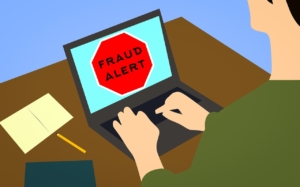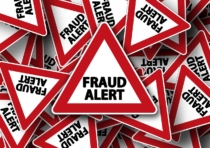 It’s time for your car manufacturer’s recommended periodic servicing. So you hop in your car and take it down to the dealership for the required maintenace. And THAT’S precisely when the scam begins. Because unless you have your owner’s manual maintenance schedule in your hand, there’s fairly high odds that you are going to be ripped off. Read below to learn why getting your car’s maintenance service without your owner’s manual is like trying to play in a pro football game without any protective gear.
It’s time for your car manufacturer’s recommended periodic servicing. So you hop in your car and take it down to the dealership for the required maintenace. And THAT’S precisely when the scam begins. Because unless you have your owner’s manual maintenance schedule in your hand, there’s fairly high odds that you are going to be ripped off. Read below to learn why getting your car’s maintenance service without your owner’s manual is like trying to play in a pro football game without any protective gear.
Like football, maintaining your car is sort of like a strategic game. You have to know the rules and know your opposition. When it comes to maintenance, your opposition is the dealership’s service department. They are literally at war with car manufacturers because they make their money upselling you on service while the carmakers make their money selling you a low-maintenance car. That’s why it is so important that the manufacturer’s maintenance schedule is the only schedule you should be following.
Beware the Service Advisor
Your first challenge will be dealing with the so-called service advisor, also known as the service salesperson. Their goal is to convince you that your car needs more work than the maintenance schedule requires. When you go to the dealership for routine maintenance, the”advisor” will advocate for the “dealer recommended service”, rather than the factory recommended service. . Basically, this calls for oil changes, engine, brake and transmission flushes that simply aren’t required in the owners manual.
The service department is the real money-earner in a dealership, so service advisors and technicians are encouraged to find repairs. Many people don’t know it, but your service advisor gets a commission on your repairs. The more you spend, the more your service advisor takes home in his/her paycheck.
For instance, the dealer might recommend changing the transmission fluid every 12,000 miles, whereas the manual recommends changing it every 60,000 miles. If you followed the dealer’s recommendation, that means you’d have four transmission fluid changes that were unnecessary. Keep in mind that transmission fluid changes can run $300 each, totaling $1200 in unnecessary maintenance.
So, simply having your owners manual in your hand sends an important message to the slick salesperson: “I’m following the good book and you better so the same”. They’ll be a lot less motivated to upsell and customer who seems aware of the factory recommended services.
Avoid the Full Inspection
Once your car exceeds about 30,000 miles, you’ll likely be subjected to the “full inspection” scam. This is when the service salesperson says: “We’re going to do all services recommended for that mileage, but we’ll also check for other problems.” Once they have the car in their clutches, they’ll make a follow-up call and tell you that there’s some additional work that needs to be done — usually having to do with fluid or air filter replacements. Each brake or transmission fluid change along with engine flushes cost between $200-300 each. So you can go in for an oil change and end up paying over $1000 in unnecessary maintenance.
Watch Out For the Fluid Flush Fraud
The fluid flush should be called the wallet flush. They are almost never needed, especially as routine maintenance, and can cause damage. If there is a sample of old versus new fluid out somewhere conveniently for you to see, you’ll probably get the sales pitch. But if you are being pressured to get a fluid flush or are told you should do it, consider another dealership. Ironically, fluid flushing as routine maintenance can cause problems by dislodging deposits that aren’t doing any harm but then get stuck in sensors or fluid passages. Some flushes use chemicals or detergents that contaminate internal surfaces and sensors, causing failures or warning lights later.
Electric Cars Are A Dealer’s Nightmare
Ask a service salesperson what is their most common nightmare, they’d likely admit that it’s the electric car. These emerging cars are remarkable in how little maintenance they require because they have so few moving parts and don’t have anywhere close to the wear and tear of an internal combustion car. So, when you bring an electric car to a dealer’s service department, they are desperate to find some upsell that they can get away with. The most likely pitch will be related to brakes, because drivers rely heavily upon their car to be able to stop.
The first question you should ask when they propose a brake job is: “what’s the wear indication?” The salesperson knows that brake pads come with a small metal strip buried under the brake pad called the “wear indicator.” When the brake pad wears down to about 15 percent of its thickness, the metal contacts the rotor and causes the brakes to screech when you hit them. That’s pretty much the only time when brake work should be required.
The Severe -Regular Switcheroo
Most service manuals contain two maintenance schedules. One is for driving in severe conditions (snow, ice, bad roads, extreme stop-and-go traffic) and one for more normal driving conditions. Naturally, cars driving in severe conditions require a bit more maintenance. However, dealerships will seize on the heightened severe recommendations and argue that ALL driving is severe. After all, what city doesn’t have traffic or occasional rough roads? Don’t buy it. Be firm that you don’t treat your car like a rental car and you don’t live in Alaska. Insist on the normal or “regular” schedule.
Our Bottom Line
If you are going to bring your car to a dealership for regularly scheduled maintenace, here are the must-dos:
- Before heading to the dealership, check out estimates of the specific service that you’ll be getting. We recommend the service estimators at Kelley Blue Book and Firestone.
- Bring your manual and hold it while talking to the service salesperson. Refer to it frequently and say, “Here’s what I want you to do.”
- Don’t trust the dealer’s recommended mileages; use the manufacturer’s guidelines in the manual. This is probably the best way to deflect the service guys when they try to upsell you.
Service salespersons are wary of customers who look like they know what they’re doing. So take some time to learn a little about your car. You might find it interesting — and it will definitely save you money the next time you go in for service.

